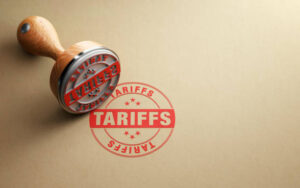Introduction
When it comes to product packaging, transportation plays a crucial role. The journey from the warehouse to the customer’s doorstep involves various challenges, making it essential to design packaging with transportation in mind.
Why is transportation crucial in packaging development?
During product distribution, the role of packaging extends far beyond mere aesthetics or branding. It’s a critical element in the transportation process, integral to the safety, efficiency, and compliance of product delivery. Packaging elements that should be considered:
- Protection against transit hazards– Packaging is designed to shield products from transportation risks like vibrations, impacts, and moisture, ensuring they reach their destination intact.
- Optimizing for transportation efficiency– Effective packaging design should not only protect the product but also streamline the transportation process. Packaging that is simple to handle can lower shipping expenses and boost logistical efficiency.
- Proper Identification: Product packaging must have proper identification listing key information such as address, recipient, any cautions or warnings (ie. hazard, fragile, etc) and any weight/size specifications.
Key factors to consider for transportation-friendly packaging
In the journey of a product from manufacturer to consumer, the role of packaging is not just to contain but also to facilitate safe and efficient transportation. This demands taking into account various factors that can impact its performance during transit.
- Transportation Mode: Different modes of transport — air, sea, or land — come with their specific packaging needs. For example, air freight often requires lightweight and pressure-resistant packaging.
- Travel Distance: Longer distances necessitate more robust packaging to prevent damage over time.
- Climate Adaptation: Packaging should be resilient to temperature and humidity changes, especially when transporting products to varying climates.
- Legal Compliance: Ensure your packaging meets all regulations specific to your product type.
- Box Dimensions and Weight: Optimize box size and weight for cost-effective shipping without compromising on product safety.
- Box Shape and Storage: Choose a shape that’s easy to stack and store, facilitating efficient loading and unloading.
- Durability: The packaging should be sturdy enough to endure the rigors of transit.
- Cost-Effectiveness: Balance the cost of packaging materials with the overall product price, aiming for affordable yet effective solutions.
Expert tips for optimized transportation packaging
- Utilize lightweight yet durable materials like cardboard or corrugated plastic.
- Employ void fillers (e.g., bubble wrap, packing peanuts) to cushion the product.
- Choose appropriate shipping labels reflecting the package’s size and weight.
- Consult with packaging professionals for tailored solutions.
Conclusion
Effective transportation-focused packaging is important for product integrity and customer satisfaction. By considering the above factors and following our expert tips, businesses can ensure their products are well-protected and efficiently transported.
Want to learn more about how GLC can help you with product packaging? Contact us today! – Click Here





